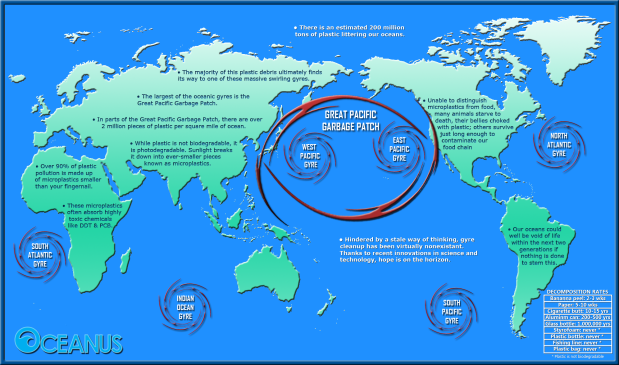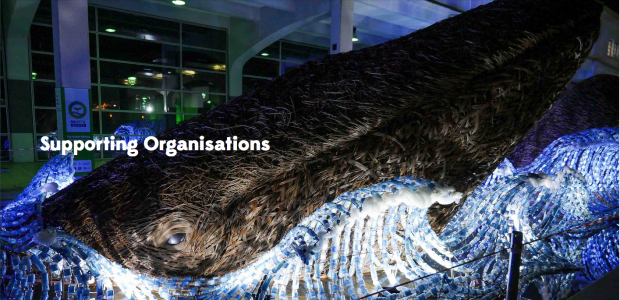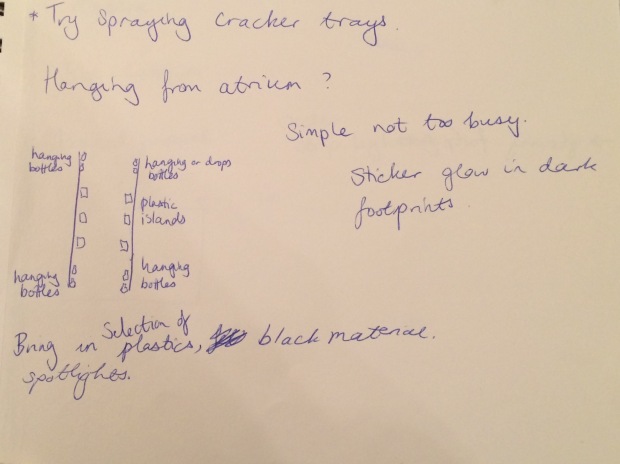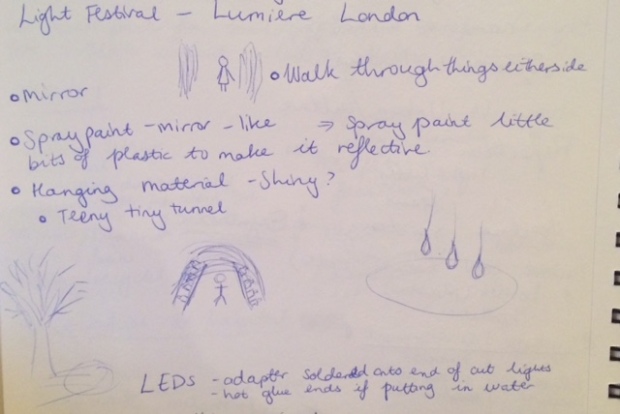
(Image retrieved from “Great Pacific Garbage Patch | PROJECT OCEANUS.” PROJECT OCEANUS | Cleaning Up Our Oceans, One Gyre at a Time. Accessed , 2016. https://projectoceanus.wordpress.com/tag/great-pacific-garbage-patch/.)
The Ocean is full of plastics, but there are areas where concentrations of rubbish and plastics swirl and gather together. The Great Pacific Garbage Patch was discovered by Charles Moore in 1997, but it wasn’t till 1999 that they realised the full extent of the patch.
Charles Moore says “Our research found 6-to-1 plastic to plankton by weight in 1999. We went back last year and found 46-to-1 plastic to plankton – the weight had gone up, the volume had gone up, the number of pieces had gone up. Every decade, it’s getting close to 10 times worse…What we are doing in the ocean with the breakdown of plastics into microscopic nanoparticles is carrying on an uncontrolled experiment in toxic drug delivery to every organism in the ocean with zero monitoring and zero controls.”
According to the BBC, “Over the last 30 to 40 years, millions of tonnes of plastic have entered the oceans. Global production of plastic now stands at 288 million tonnes per year, of which 10% ends up in the ocean in time. Most of that – 80% – comes from land-based sources. Litter gets swept into drains, and ends up in rivers – so that plastic straw or cup lid you dropped, the cigarette butt you threw on the road… they could all end up in the sea.
The plastic is carried by currents and congregates in five revolving water systems, called gyres, in the major oceans, the most infamous being the huge Pacific Garbage Patch, half way between Hawaii and California.”
The ocean gyres are a system of circular ocean currents formed by the wind and the rotation of the planet.
Here is a video describing the polluting of plastics in the oceans.
Here is another video showing a TED talk.
“The Dutch Boy Mopping Up a Sea of Plastic.” BBC News. Accessed , 2016. http://www.bbc.com/news/magazine-29631332.
“Great Pacific Garbage Patch | PROJECT OCEANUS.” PROJECT OCEANUS | Cleaning Up Our Oceans, One Gyre at a Time. Accessed , 2016. https://projectoceanus.wordpress.com/tag/great-pacific-garbage-patch/.
“Great Pacific Garbage Patch.” National Geographic Society. Accessed , 2016. http://nationalgeographic.org/encyclopedia/great-pacific-garbage-patch/.
“Captain Charles Moore | Earth Island Journal | Earth Island Institute.” Earth Island Institute | Welcome. Accessed , 2016. http://www.earthisland.org/journal/index.php/eij/article/charles_moore/.
“TED – the Great Pacific Garbage Patch.” YouTube. n.d. https://www.youtube.com/watch?v=3qvf_zesN9Y.
“Great Pacific Garbage Patch – Ocean Pollution Awareness.” YouTube. n.d. https://www.youtube.com/watch?v=1qT-rOXB6NI.
Quotes from:
“The Dutch Boy Mopping Up a Sea of Plastic.” BBC News. Accessed , 2016. http://www.bbc.com/news/magazine-29631332.
“Captain Charles Moore | Earth Island Journal | Earth Island Institute.” Earth Island Institute | Welcome. Accessed , 2016. http://www.earthisland.org/journal/index.php/eij/article/charles_moore/.











